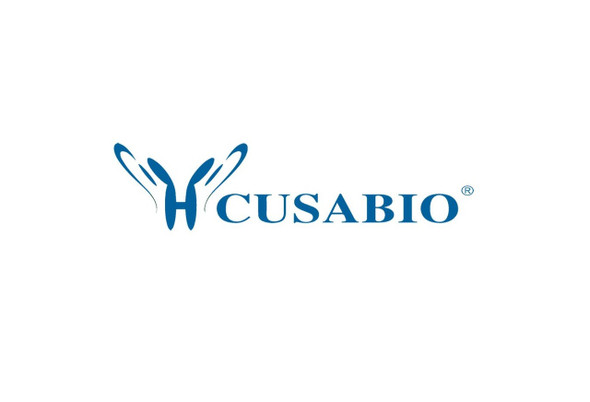Cusabio Human Recombinants
Recombinant Human Transmembrane prolyl 4-hydroxylase (P4HTM), partial | CSB-EP878913HU
- SKU:
- CSB-EP878913HU
- Availability:
- 13 - 23 Working Days
Description
Recombinant Human Transmembrane prolyl 4-hydroxylase (P4HTM), partial | CSB-EP878913HU | Cusabio
Alternative Name(s): Hypoxia-inducible factor prolyl hydroxylase 4 ;HIF-PH4 ;HIF-prolyl hydroxylase 4 ;HPH-4
Gene Names: P4HTM
Research Areas: Cancer
Organism: Homo sapiens (Human)
AA Sequence: VHYSNGDESSDPGPQHRAQGPGPEPTLGPLTRLEGIKVGHERKVQLVTDRDHFIRTLSLKPLLFEIPGFLTDEECRLIIHLAQMKGLQRSQILPTEEYEEAMSTMQVSQLDLFRLLDQNRDGHLQLREVLAQTRLGNGWWMTPESIQEMYAAIKADPDGDGVLSLQEFSNMDLRDFHKYMRSHKAESSELVRNSHHTWLYQGEGAHHIMRAIRQRVLRLTRLSPEIVELSEPLQVVRYGEGGHYHAHVDSGPVYPETICSHTKLVANESVPFETSCRQVSPNWGLPSILRPGTPMTQAQPCTVGVPLGMGPGDHWVIPVSPWEHPQLGTCSVPPLPYSYMTVLFYLNNVTGGGETVFPVADNRTYDEMSLIQDDVDLRDTRRHCDKGNLRVKPQQGTAVFWYNYLPDGQGWVGDVDDYSLHGGCLVTRGTKWIANNWINVDPSRARQALFQQEMARLAREGGTDSQPEWALDRAYRDARVEL
Source: E.coli
Tag Info: N-terminal 6xHis-SUMO-tagged
Expression Region: 82-563aa
Sequence Info: Partial of Isoform 3
MW: 70.5 kDa
Purity: Greater than 90% as determined by SDS-PAGE.
Relevance: Catalyzes the post-translational formation of 4-hydroxyproline in hypoxia-inducible factor (HIF) alpha proteins. Hydroxylates HIF1A at 'Pro-402' and 'Pro-564'. May function as a cellular oxygen sensor and, under normoxic conditions, may target HIF through the hydroxylation for proteasomal degradation via the von Hippel-Lindau ubiquitination complex.
Reference: An endoplasmic reticulum transmembrane prolyl 4-hydroxylase is induced by hypoxia and acts on hypoxia-inducible factor alpha.Koivunen P., Tiainen P., Hyvaerinen J., Williams K.E., Sormunen R., Klaus S.J., Kivirikko K.I., Myllyharju J.J. Biol. Chem. 282:30544-30552(2007)
Storage: The shelf life is related to many factors, storage state, buffer ingredients, storage temperature and the stability of the protein itself. Generally, the shelf life of liquid form is 6 months at -20?/-80?. The shelf life of lyophilized form is 12 months at -20?/-80?.
Notes: Repeated freezing and thawing is not recommended. Store working aliquots at 4? for up to one week.
Function: Catalyzes the post-translational formation of 4-hydroxyproline in hypoxia-inducible factor (HIF) alpha proteins. Hydroxylates HIF1A at 'Pro-402' and 'Pro-564'. May function as a cellular oxygen sensor and, under normoxic conditions, may target HIF through the hydroxylation for proteasomal degradation via the von Hippel-Lindau ubiquitination complex.
Involvement in disease:
Subcellular Location: Endoplasmic reticulum membrane, Single-pass type II membrane protein
Protein Families:
Tissue Specificity: Widely expressed with highest levels in adult pancreas, heart, skeletal muscle, brain, placenta, kidney and adrenal gland. Expressed at lower levels in epiphyseal cartilage and in fibroblasts.
Paythway:
Form: Liquid or Lyophilized powder
Buffer: If the delivery form is liquid, the default storage buffer is Tris/PBS-based buffer, 5%-50% glycerol. If the delivery form is lyophilized powder, the buffer before lyophilization is Tris/PBS-based buffer, 6% Trehalose, pH 8.0.
Reconstitution: We recommend that this vial be briefly centrifuged prior to opening to bring the contents to the bottom. Please reconstitute protein in deionized sterile water to a concentration of 0.1-1.0 mg/mL.We recommend to add 5-50% of glycerol (final concentration) and aliquot for long-term storage at -20?/-80?. Our default final concentration of glycerol is 50%. Customers could use it as reference.
Uniprot ID: Q9NXG6
HGNC Database Link: HGNC
UniGene Database Link: UniGene
KEGG Database Link: KEGG
STRING Database Link: STRING
OMIM Database Link: OMIM










